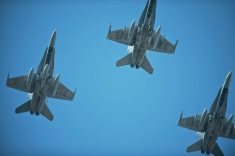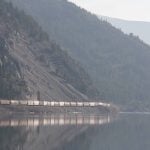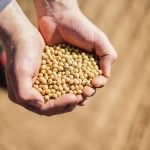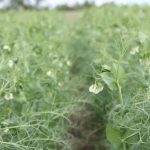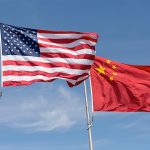New strategies may help you break out of traditional size constraints, whether you want to be bigger than the old rules allowed, or smaller
f you sit in on Alfons Weersink’s introductory ag economics class at the University of Guelph, you’re going to see a sample of agriculture’s traditional U-shaped cost curve. It will be a graph in a textbook, almost like a smiley face,
showing the average cost of production per unit compared to farm size.
It’s a graph that has always shown both the power — and the limitations — of economies of scale on the farm.
Read Also

A new spin on farm legacy
What does farm legacy look like for the next generation.
Weersink will patiently explain how, on average, as farms get larger, economies of scale make it possible for them to cut the cost to produce one unit of output (i. e. one bushel of wheat or one litre of milk or one kg of beef).
There’s only so much cutting you can do, however. There’s a bottom to the graph, right at the low point of the U where the costs per unit production are at their lowest.
If you keep growing the farm beyond this size, your cost per unit will start sloping upward. It’s what ag economists like Weersink call “diseconomies of scale.” Simply put, bigger isn’t always better.
For example, lets say farmer Pete has a section of land and a set of machinery. Then Pete starts buying or renting more land to spread out his fixed costs. At first, his average cost per unit of production (c. o. p.) falls with size, because of economies of scale. The amount of sizing up that Pete will have to do depends on several factors, including the initial size of the farm and how well Pete can maintain the per-acre quality of his management across a larger and larger farm size.
When Pete’s farm size maximizes resources such as labour, technology, machinery and management abilities, he’s in the sweet spot — the bottom of the U. On his farm, this is where he is most efficient. His fixed costs match his needs and he’s big enough to negotiate a competitive rate for variable costs.
Weersink, professor in the Department of Food, Agriculture and Resource Economics at the University of Guelph says that the location of this sweet spot varies for every farm, depending not only on management ability, but also on factors such as debt servicing, technology choice (a. k. a. shiny paint disorder) and labour costs.
As Pete continues to grow his farm, diseconomies of size creep in for all sorts of reasons, including that it’s difficult to manage all things well. As this operational size keeps climbing, suddenly Pete’s cost of production goes up. When you hear things like, “They got too big, too quickly” — that’s dis-economy of size happening.
That was then, this is…
It might be time to rip that graph out of tyour ag economics textbook. The traditional U-shape doesn’t seem to apply to agriculture anymore. In the last 15 years, most of the average-cost studies for farms across many locations and farm types are showing that agriculture’s old U is now an L, just as it is in many other industries.
This L-curve shows the average per-unit cost of production drops very quickly as smaller farms expand. Then, after you expand to a certain point, the average cost per unit remains the same, seemingly forever. You can keep getting bigger, but your cost of production will remain essentially the same.
In other examples, such as a 2007 study by USDA economist Roberto Mosheim and C. A. Knox Lovell, researchers found significant scale economies in U. S. dairy farms and no region where
returns to scale reached a plateau. The bottom of the L-curve kept sloping slightly downwards and to the right, explaining why the average size of dairy farms has been increasing.
Others studies have pointed out that range of production costs is so wide within a given farm size, the average isn’t statistically significant from one size category to another. “We have some high-cost small producers and some low-cost small producers,” Weersink explains. “Same as we have high-cost large producers and low-cost large producers.”
Ken McEwan, economist at the university’s Ridgetown Campus recently studied hog farm production costs in Ontario, Quebec and Iowa and found management factors were more significant than the size of the operation.
“In Ontario we found the cost of production per hog varied substantially, $30 to $40 per hog,” McEwan says.
When McEwan teamed with Al Mussell at the George Morris Centre, they found similar variability for cost of production with cash cropping in Ontario.
In part, this may be due to the pressures on farm managers. The nature of most agricultural production is that we operate under limited time periods. “We can’t make (plant, spray, harvest) corn every day of the work week,” says Weersink. “A family unit tends to do that pretty well and it doesn’t lend itself to large economies of scale like we see in other sectors.”
Alternatively, however, the new cost curve in farming may be L-shaped simply because we haven’t reached the point of consolidation where costs start going up with size. Says Weersink: “If one person managed all the land in Ontario, I’m sure his or her average production costs would be higher than the 30,000 farmers operating that farm land now.”
Another explanation is that larger companies are simply replicating the most efficient size — a barn or production unit is replicated under one owner/manager. However, McEwan says with swine, efficiencies are found in managing animal flow, not necessarily expanding. For example, a very efficient farm will match animal numbers to logistics, including everything from feeding equipment that is sized so the farm can produce enough animals to meet processor needs through to loading facilities and tractor-trailer size.
Back in economics 101 class, you’d also learn that price minus the cost equals the margin. Mostly, farmers are price takers and commodity margins are tight enough so the only way to increase net income from the business is to increase output.
That means some expansion decisions are made to increase total net income and may produce a benefit for the farm even if there is a slight increase in production cost. “When margins are small enough and you need to generate enough money, it pushes farmers to keep expanding,” says Weersink.
The good news for family-farm advocates is that agriculture’s cost curve is not a straight downward line, implying that the only alternative is to get bigger and bigger. Also the variability in production costs means small well-run farms can compete against much larger businesses.
The average cost curve represents how costs vary with output for a given set of input prices, adds Weersink. Change input prices, or technology and you change the shape and position of the curve. CG





